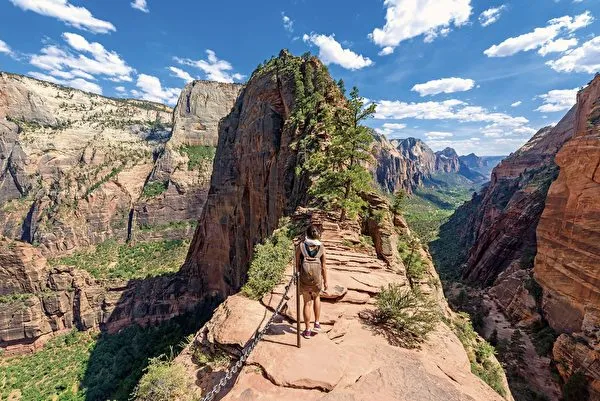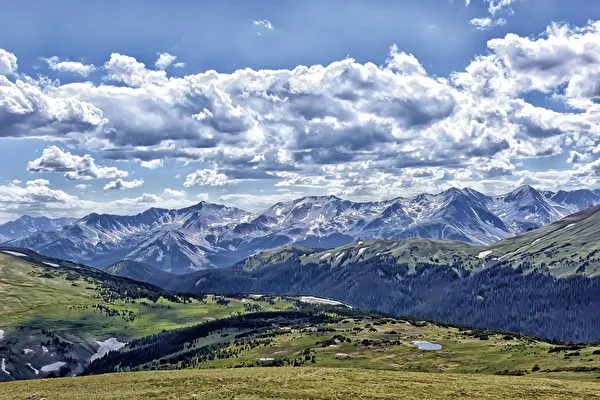In the 19th century, as the United States rapidly expanded westward, untouched and resource-rich lands gradually came to light. Alongside Yosemite and Yellowstone, many other areas needed protection from uncontrolled exploitation. From this, the idea of national parks was born, opening a new chapter in the history of nature conservation in America and the world.
To protect these precious lands, President Abraham Lincoln laid the foundation with the Yosemite Grant Act of 1864. Building on that success, in 1872, Yellowstone National Park officially came into existence, becoming a symbol of efforts to preserve nature and opening up opportunities to explore “Wonderland” for all Americans. The development of the U.S. national park system has inspired many countries around the world.
The History of the U.S. National Park System
The birth of the U.S. national park system was a long journey, closely linked to the tireless efforts of conservationists and nature lovers. From Yellowstone to the Grand Canyon, each national park possesses its own unique beauty and a distinctive historical narrative.
Under the guidance of environmental advocates like John Muir, the nature conservation movement grew stronger, driving the establishment of more national parks and monuments across the American West. In 1916, President Woodrow Wilson officially established the National Park Service (NPS), unifying the management of federal parks under a single agency.
Today, the United States proudly boasts 63 national parks, a testament to its commitment to preserving nature and national heritage. The number of visitors to national parks continues to rise, from 120,690 in 1904 to nearly 300 million in 2021, demonstrating the strong appeal of these “green paradises.”
| Year | National Park Visitors |
|---|---|
| 1904 | 120,690 |
| 1940 | 16,410,148 |
| 1960 | 71,586,000 |
| 1980 | 220,463,211 |
| 2000 | 285,891,275 |
| 2010 | 281,303,769 |
| 2019 | 327,516,619 |
| 2021 | 297,115,406 |
Exploring Spring Mountains National Conservation Area: Nevada’s Hidden Gem
Alongside famous names like Yellowstone or the Grand Canyon, Spring Mountains National Conservation Area is a hidden gem, offering unique and distinct experiences. Located near Las Vegas, Spring Mountains is a lush green oasis in the arid desert, with a diverse ecosystem and majestic landscapes.
Location and Natural Features
Spring Mountains, also known as the “Charleston Mountains,” is situated northwest of Las Vegas, Nevada. This conservation area covers a vast expanse, encompassing numerous high peaks, deep canyons, and dense pine forests. Charleston Peak, the highest mountain in Spring Mountains, is an ideal destination for those who love hiking and exploring nature.
Diverse Ecosystem
The diversity in elevation and terrain has created a rich ecosystem in Spring Mountains. Visitors can find many rare plant and animal species, from giant Ponderosa pines to majestic bighorn sheep. The conservation area is also home to many migratory bird species, attracting researchers and bird enthusiasts for observation.
Exciting Activities
Spring Mountains National Conservation Area offers countless exciting activities for visitors of all ages. Here are a few suggestions:
- Hiking and Trekking: With numerous trails ranging from easy to challenging, Spring Mountains is a paradise for hikers and trekkers.
- Camping: Experiencing camping under the starry sky in Spring Mountains is an unforgettable memory.
- Sightseeing: From the summit of Charleston Peak, visitors can admire panoramic views of the Nevada desert and the dazzling city of Las Vegas.
Important Notes for Visitors
To have a safe and fulfilling trip, visitors should note a few things:
- Weather: Weather in Spring Mountains can change rapidly, especially in winter. Check the weather forecast before you go and prepare appropriate clothing.
- Water: Bring enough drinking water, especially when participating in outdoor activities.
- Environmental Protection: Maintain general cleanliness, do not litter, and comply with the regulations of the conservation area.
Top 5 Most Visited National Parks in the U.S. (Reference)
To gain a broader perspective on the U.S. national park system, let’s take a look at the 5 national parks with the highest visitor numbers:
- Great Smoky Mountains National Park: With 14.16 million visitors, this is one of the largest protected areas in the East, attracting visitors with its natural beauty and diverse activities.
- Zion National Park: Witnessing rapid visitor growth, Zion is famous for the Narrows and Angels Landing.

- Yellowstone National Park: The first national park in the United States, famous for its hot springs and colorful lakes.
- Grand Canyon National Park: With its immense scale, the Grand Canyon is an unmissable destination, attracting visitors with its deep canyons and adventurous activities.

- Rocky Mountain National Park: With 4.4 million visitors, Rocky Mountain is an ideal destination for those who love hiking and exploring wild nature.
Conclusion
Spring Mountains National Conservation Area is an ideal destination for those who want to escape the hustle and bustle of the city and immerse themselves in wild nature. With majestic landscapes, a diverse ecosystem, and many exciting activities, Spring Mountains promises to bring visitors unforgettable experiences. Plan your trip today and discover Nevada’s hidden gem! Are you ready to explore the wonders that nature has bestowed upon Spring Mountains?